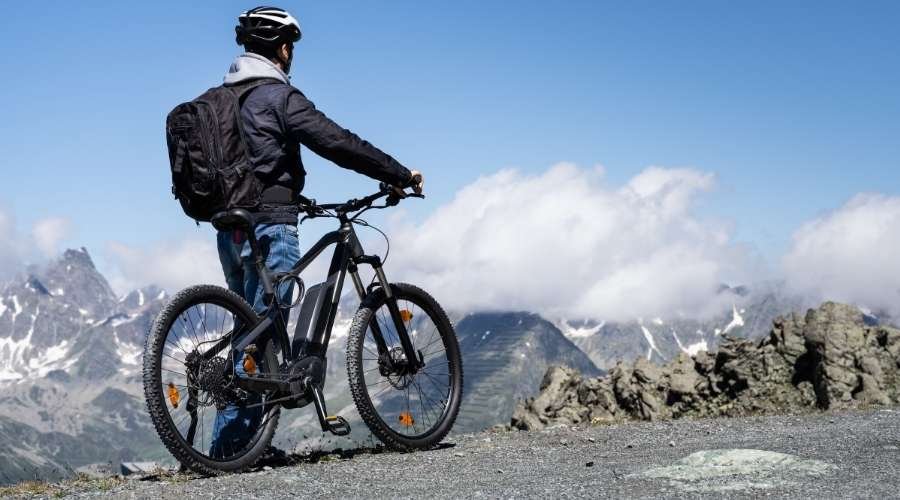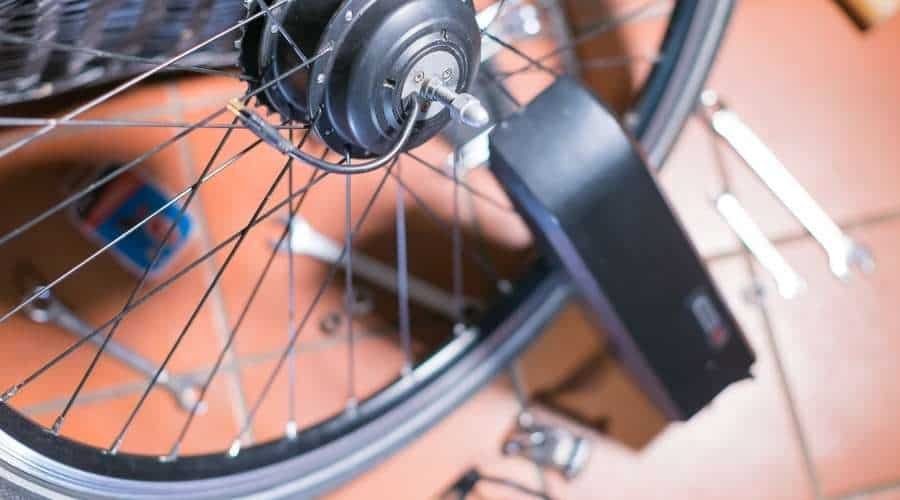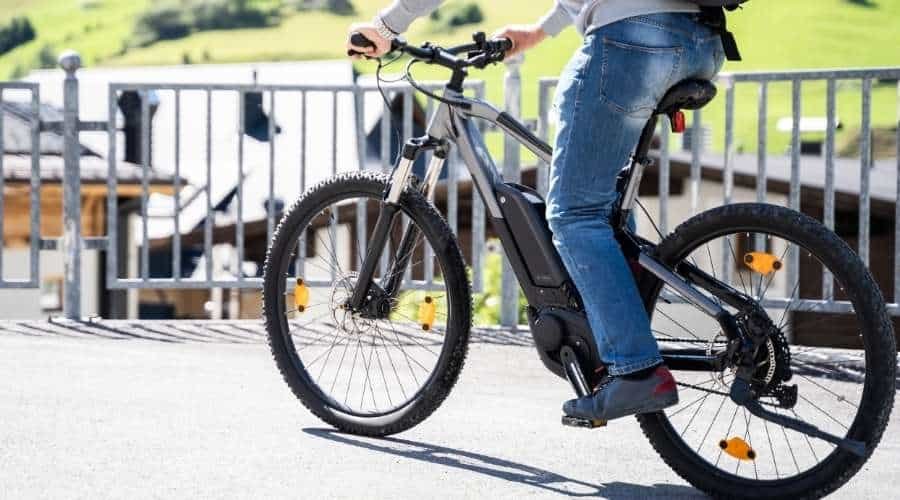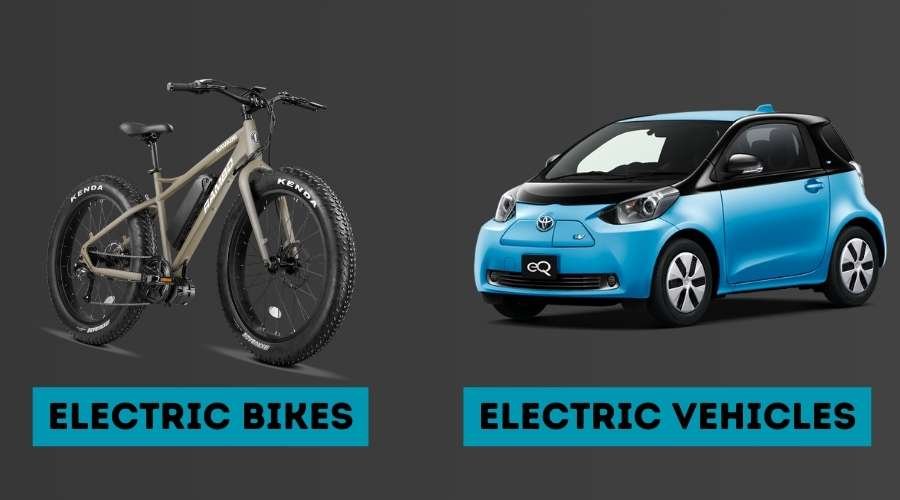Have you ever felt the jolt of anxiety as your e-bike’s battery gauge edges closer to empty, wondering if you’ll make it to your destination? You’re not alone. Range anxiety, the fear of running out of battery power before reaching your goal, is a common concern for e-bike enthusiasts. In fact, it’s a challenge that echoes through the minds of many riders, particularly those who rely on their e-bikes for daily commutes or extended adventures.
Statistics reveal the growing popularity of e-bikes, with sales soaring in recent years. As more people embrace these electric-powered wonders for eco-friendly commuting and leisurely rides, understanding how to manage and extend your e-bike’s range becomes crucial.
In this comprehensive guide, we delve deep into the world of e-bike battery performance and range management. We’ll explore the factors that influence your e-bike’s range, provide insights into optimizing battery life, introduce you to different e-bike brands and battery systems, and even draw comparisons between e-bikes and electric vehicles (EVs).
Whether you’re a seasoned e-bike owner or a newcomer to the world of electric biking, this guide aims to empower you with knowledge to conquer range anxiety and unlock the full potential of your e-bike. So, let’s dive in and learn how to get the most out of your electrifying rides!
Understanding E-Bike Range Anxiety

Range anxiety is the fear of running out of battery power before reaching your destination.
If you’re an e-bike owner, you may have experienced range anxiety at some point. Range anxiety is the fear of running out of battery power before reaching your destination. It’s a common concern for e-bike riders, especially those who use their bikes for commuting or long-distance rides.
The good news is that there are ways to manage range anxiety and get the most out of your e-bike battery. Here are some tips to help you understand and overcome range anxiety:
Understand Your Battery Capacity
The first step in managing range anxiety is to understand your e-bike battery’s capacity. Most e-bike batteries have a capacity of between 300 and 1000 watt-hours (WH). The higher the watt-hour rating, the more energy the battery can store, and the longer the range.
Plan Your Route
Planning your route is another way to manage range anxiety. Before heading out, consider the distance you’ll be traveling, the terrain, and any potential obstacles. If you’re unsure about the route, use a mapping app or website to help you plan.
Monitor Your Battery Level
It’s essential to keep an eye on your battery level while riding. Most e-bikes have a battery level indicator that shows how much charge is left. If you notice that your battery level is low, consider reducing your speed or pedaling more to conserve energy.
Charge Your Battery Regularly
One of the best ways to avoid range anxiety is to charge your battery regularly. Whenever your e-bike is where your charger is, get the battery on charge. It may be that you can normally go a week without plugging the bike in, but if you suddenly find yourself needing to do a longer journey and you haven’t stuck any charge in all week, you may not have enough juice.
Carry a Backup Battery
If you’re planning a long-distance ride, consider carrying a backup battery. This will give you extra range and peace of mind, knowing that you have a backup power source if needed.
Conclusion
Range anxiety is a common concern for e-bike owners, but it doesn’t have to be a barrier to riding. By understanding your battery capacity, planning your route, monitoring your battery level, charging your battery regularly, and carrying a backup battery, you can manage range anxiety and enjoy the full potential of your e-bike.
E-Bike Battery Basics

If you’re new to e-bikes, you might be wondering about the battery that powers your ride. Here’s a quick rundown of the basics you need to know:
Battery Types
Most e-bikes use lithium-ion batteries, which are lightweight and have a high energy density. They’re also more expensive than other types of batteries, such as lead-acid batteries. Lithium-ion batteries are available in different shapes and sizes, and they can be arranged in different configurations to create a battery pack that fits your bike.
Voltage and Watt-Hours
The voltage of an e-bike battery determines the force of the electric flow from the battery to the motor. The higher the voltage, the more power the battery can provide to the motor, which typically allows an e-bike to reach higher maximum speeds. Standard ratings for e-bike systems are 36V, 48V, and 52V.
The energy capacity of an e-bike battery is measured in watt-hours (Wh), which is calculated by multiplying the voltage by the amp-hours. The higher the watt-hours, the more energy the battery can store, which means you’ll be able to ride farther on a single charge.
Amp-Hours and Energy Capacity
Amp-hours (Ah) is a measure of the capacity of a battery. The more amp-hours a battery has, the better range it can provide. Most 250W motors pair with 36V batteries and controllers, which typically have a range of 8-14Ah.
Bigger batteries with more amp-hours are available, but they’re also more expensive. A 750Wh battery, for example, has a capacity of 0.75kWh and can provide more range than a smaller battery. Keep in mind that bigger batteries also add weight to your e-bike, which can affect your ride experience.
That’s a brief overview of e-bike battery basics. In the next section, we’ll take a closer look at how to get the most out of your e-bike battery.
Extending E-Bike Range

If you’re experiencing range anxiety on your e-bike, there are several things you can do to extend your battery life and increase your range. Here are a few strategies to consider:
Using a Range Extender
One way to extend your e-bike’s range is to use a range extender. A range extender is an additional battery that can be attached to your e-bike to provide extra power when your main battery runs out. Some range extenders can be mounted on the frame of your bike, while others can be carried in a bag or backpack.
When choosing a range extender, consider the size and weight of the battery, as well as the range it can provide. Some range extenders can double your e-bike’s range, while others may only provide a few extra miles. Keep in mind that range extenders can be expensive, so it’s important to weigh the cost against the benefits.
Optimizing Cadence and Pedal-Assist
Another way to extend your e-bike’s range is to optimize your cadence and pedal-assist settings. Pedal-assist can help conserve battery power by providing extra power when you need it most, such as when climbing hills or accelerating from a stop.
To optimize your pedal-assist settings, experiment with different levels of assistance and find the one that works best for your riding style. You can also adjust your cadence to conserve battery power. Pedaling at a slower, more consistent pace can help you use less power and extend your range.
Choosing a Commute Route
Finally, choosing the right commute route can also help you extend your e-bike’s range. Look for routes that are flatter and have fewer hills, as climbing hills can drain your battery quickly. You can also try to avoid stop-and-go traffic, as accelerating from a stop can use a lot of power.
Consider using bike lanes or dedicated bike paths, as these routes are often designed to be more e-bike-friendly. And don’t forget to plan your route ahead of time, so you can avoid getting lost or taking longer than necessary.
By using a range extender, optimizing your cadence and pedal-assist settings, and choosing the right commute route, you can extend your e-bike’s range and reduce your range anxiety.
The Role of the Motor and Assistance Modes

When it comes to e-bike range anxiety, one of the most important factors to consider is the motor and its power output. In general, the more powerful the motor, the more energy it will consume and the shorter the range will be. However, this doesn’t mean that you should always opt for a lower power motor if you want to maximize your range. Instead, it’s important to consider your individual needs and preferences.
Motor Power
The power output of an e-bike motor is typically measured in watts (W) or newton meters (Nm). The higher the power output, the more energy the motor will consume and the shorter the range will be. However, a more powerful motor can also provide more assistance, which can be particularly useful if you frequently ride on steep hills or carry heavy loads.
Assistance Modes
Most e-bikes come with different assistance modes, which allow you to adjust the level of assistance provided by the motor. The lower assistance modes will typically provide less power output, which can help to extend your range. However, you may find that you need more assistance in certain situations, such as when riding uphill or against a headwind.
Some of the most common assistance modes include:
- PAS 1 – Eco Mode: This is the gentlest level of assistance, designed to maximize your battery life while providing a subtle boost to your pedal strokes. PAS 1 is perfect for conserving energy and extending your e-bike’s range on longer rides.
- PAS 2 – City Mode: Stepping up from Eco Mode, PAS 2 offers a bit more oomph. It’s well-suited for urban commuting, helping you navigate city streets and conquer moderate inclines with ease. It strikes a balance between efficiency and power.
- PAS 3 – Touring Mode: When you’re ready to venture into longer journeys or explore scenic routes, PAS 3 provides a comfortable level of assistance. It’s great for leisurely rides and offers a substantial boost to your pedaling efforts.
- PAS 4 – Sport Mode: If you crave a more dynamic ride, PAS 4 is your go-to choice. It delivers a robust level of assistance, making quick work of steep hills and allowing you to maintain a brisk pace. It’s perfect for those seeking an active, sporty e-bike experience.
- PAS 5 – Turbo Mode: Turbo Mode unleashes the full potential of your e-bike’s motor. It offers maximum assistance, propelling you forward with remarkable force. This mode is ideal for conquering challenging terrain or achieving top speeds.
In general, the more powerful the motor, the more energy it will consume and the shorter the range will be
It’s worth experimenting with different assistance modes to find the right balance between power output and range for your individual needs.
Overall, the motor and assistance modes are important factors to consider when it comes to e-bike range anxiety. By understanding how these components work and experimenting with different settings, you can find the right balance between power output and range for your individual needs.
Factors Affecting E-Bike Range

If you’re new to e-biking, one of the first things you’ll notice is that the range of your e-bike depends on several factors. Understanding these factors can help you manage your battery life and avoid range anxiety. Here are some of the most important factors that affect your e-bike’s range:
Terrain
The terrain you ride on has a significant impact on your e-bike’s range. Riding on hills or climbing steep inclines will drain your battery faster than riding on flatter routes. Gravel and off-road trails can also reduce your range, so keep that in mind when planning your route.
Weight
The weight of both you and your e-bike can affect your range. If you’re carrying a heavy backpack or cargo, it will take more energy to move the extra weight, which means your battery will drain faster. Similarly, if you have a heavier e-bike, it will require more energy to move it, which will also reduce your range.
Weather and Temperature
Weather and temperature can also impact your e-bike’s range. Riding in strong headwinds or heavy rain can increase your resistance and reduce your range. Extremely cold temperatures can also reduce your battery’s performance, so keep that in mind if you’re planning a winter ride.
Fitness Level
Your fitness level can also affect your e-bike’s range. If you’re using a lot of pedal assist, it will drain your battery faster than if you’re doing more of the work yourself. So, if you’re looking to maximize your range, try using a lower level of assist or turning it off altogether.
By keeping these factors in mind, you can manage your e-bike’s battery life and ensure that you get the most out of each charge.
Battery Life and Maintenance

As an e-bike rider, you want to ensure that your battery lasts as long as possible and that it doesn’t fail you when you need it the most. Proper battery maintenance is key to achieving both of these goals. In this section, we’ll discuss two important aspects of battery maintenance: recharging the battery and maximizing its lifespan.
Recharging the Battery
It’s important to recharge your battery regularly to ensure that it’s always ready to go when you need it. However, it’s equally important to avoid overcharging or undercharging your battery, as this can put unnecessary strain on the cells and reduce its overall performance.
To avoid overcharging, always follow the instructions recommended in the manual charging guidelines. Most e-bike batteries have a built-in mechanism that prevents overcharging, but it’s still a good idea to keep an eye on the battery while it’s charging. Once it’s fully charged, unplug the charger from the wall and the battery from the charger.
Undercharging can also be harmful to your battery’s lifespan. To avoid undercharging, make sure you charge your battery fully after each use. If you’re not planning to use your e-bike for an extended period, it’s a good idea to charge the battery to about 50% before storing it.
Maximizing Battery Lifespan
The lifespan of your battery depends on several factors, including the type of battery, how often you use it, and how well you maintain it. Here are some tips to help you maximize your battery’s lifespan:
- Avoid exposing your battery to extreme temperatures. Store it in a cool, dry place when not in use.
- Don’t let your battery sit unused for long periods. If you’re not planning to use your e-bike for an extended period, charge the battery to about 50% before storing it.
- Regularly check your battery for signs of wear and tear. If you notice any damage, replace it immediately.
- Avoid using your e-bike in extreme weather conditions, such as heavy rain or snow. This can damage the battery and other components.
- If you’re planning a long ride, make sure your battery is fully charged before you start.
By following these tips, you can help ensure that your e-bike battery lasts as long as possible and that you don’t experience range anxiety when you’re out on the road.
If you’re planning a long ride, make sure your battery is fully charged before you start.
E-Bike Brands and Battery Performance

Here are some popular e-bike brands and their corresponding battery systems:
Bosch
Bosch is a well-known brand in the e-bike industry, and their battery systems are known for their reliability and long lifespan. The Bosch PowerPack 500 is a popular choice among e-bike riders, with a range of up to 100 miles on a single charge. Bosch also offers a dual-battery system, which can extend the range even further.
Shimano
Shimano is another popular brand in the e-bike industry, and their STEPS system is known for its smooth and efficient power delivery. The Shimano STEPS battery has a range of up to 75 miles on a single charge, and can be charged to 80% in just two hours.
Fazua
Fazua is a newer player in the e-bike industry, but their battery systems are gaining popularity among riders. The Fazua Evation system is unique in that the battery and motor are both housed in the bike’s downtube, making it one of the lightest e-bike systems available. The Fazua battery has a range of up to 50 miles on a single charge.
Bafang
Bafang is a Chinese manufacturer of e-bike motors and batteries, and their products are used by many e-bike brands around the world. The Bafang battery has a range of up to 60 miles on a single charge, and can be charged to 80% in just two hours.
Brose
Brose is a German manufacturer of e-bike motors and batteries, and their products are known for their high performance and reliability. The Brose battery has a range of up to 90 miles on a single charge, and can be charged to 50% in just one hour.
When choosing an e-bike, it’s important to consider the brand and type of battery used, as this can greatly affect the performance and range of the bike. Be sure to do your research and choose a brand and battery system that meets your needs and budget.
Comparing E-Bikes and Electric Vehicles

The range of e-bikes and EVs can vary depending on a number of factors. Here are some things to consider when comparing the two:
Battery Capacity
One of the main differences between e-bikes and EVs is the size of their batteries. EVs generally have much larger batteries than e-bikes, which allows them to travel much farther on a single charge. For example, some EVs can travel over 300 miles on a single charge, while most e-bikes have a range of around 20-50 miles.
Charging Time
Another key difference is the amount of time it takes to charge the battery. EVs generally take much longer to charge than e-bikes, due to their larger battery size. While some EVs can charge in as little as 30 minutes with a fast charger, most take several hours to charge. E-bikes, on the other hand, can often be fully charged in just a few hours.
Range Anxiety
Range anxiety is a common concern for both e-bike and EV owners. This is the fear that the battery will run out of power before reaching the destination, leaving the rider stranded. While EVs generally have a longer range than e-bikes, they also require more planning to ensure that the battery doesn’t run out mid-trip. E-bikes, on the other hand, are generally used for shorter trips and can often be recharged at home or at work.
Cost
Finally, the cost of e-bikes and EVs can vary widely. While e-bikes are generally much less expensive than EVs, they also have a shorter range and are not suitable for longer trips. EVs, on the other hand, are more expensive but offer a longer range and can be used for longer trips.
Overall, while e-bikes and EVs share some similarities, they also have some key differences when it comes to range and battery life. Depending on your needs and budget, one may be a better choice than the other.
Conclusion
In conclusion, understanding the battery life of your E-bike is crucial to avoid range anxiety and ensure you get the most out of your bike. Here are a few key takeaways to keep in mind:
- Charge your battery frequently: Charging your battery frequently can help prolong its life and ensure you always have enough power for your rides. Avoid letting your battery discharge completely before recharging it.
- Store your battery properly: Proper storage can help prevent damage to your battery. Keep your battery in a cool, dry place, and avoid exposing it to extreme temperatures or moisture.
- Monitor your battery’s health: Keep an eye on your battery’s health to ensure it’s functioning properly. If you notice any issues, such as decreased range or slower charging times, it may be time to replace your battery.
- Consider your riding habits: Your riding habits can have a big impact on your battery life. If you frequently ride at high speeds or on hilly terrain, you may need to recharge your battery more often.
By following these tips, you can help ensure you get the most out of your E-bike’s battery life and avoid range anxiety. Remember, taking care of your battery is an important part of owning an E-bike, and can help you enjoy your rides to the fullest.

